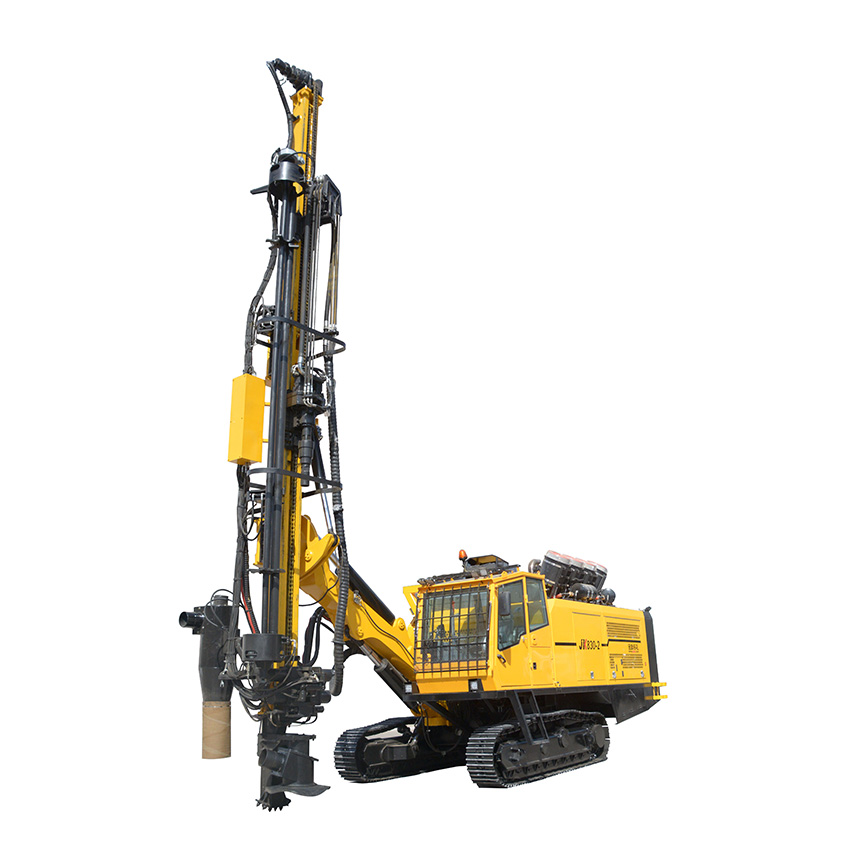Analysis and solutions to common faults of drilling rigs!
1. Why is it difficult to start a drilling rig in winter? It is not only determined by its own technical condition, but also affected by the outside temperature. Starting at low temperatures in winter is more difficult, mainly due to the following reasons:
⑴ The winter climate is cold, the ambient temperature is low, the viscosity of the engine oil increases, and the friction resistance of each moving part increases, which reduces the starting speed and makes it difficult to start.
⑵ The battery capacity decreases as the temperature drops, which further reduces the starting speed.
⑶ Due to the reduction in starting speed, the leakage of compressed air increases, and the heat dissipation of the cylinder wall increases, resulting in a significant reduction in the temperature and pressure of the air at the end of compression, which increases the delay period of diesel ignition, and even fails to burn in severe cases.
⑷ The viscosity of diesel at low temperatures increases, which reduces the injection speed. In addition, the swirl speed, temperature and pressure of the air at the end of compression are relatively low, which makes the atomization quality of the diesel injected into the cylinder poor, making it difficult to quickly form a good combustible gas with the air and ignite and burn in time, or even unable to ignite, resulting in difficulty in starting.
2. What are the conditions for good starting performance of a Jinke drilling rig?
⑴ There must be enough starting speed. The higher the starting speed, the less gas leakage in the cylinder, the shorter the time for compressed air to transfer heat to the cylinder wall, and the less heat loss, so that the gas temperature and pressure at the end of compression can be increased. Generally, the speed is required to be above 100r/min.
⑵ The cylinder should have good sealing. This can further reduce the amount of leakage and ensure that the gas has sufficient combustion temperature and pressure at the end of compression. The compression pressure of the cylinder shall not be lower than 80% of the standard value.
⑶ The matching clearance between the engine and the running parts is required to be appropriate and well lubricated.
⑷ The battery must have sufficient starting capacity and the technical condition of the starting circuit is normal.
⑸ The starting oil volume meets the requirements, the injection quality is good, and the injection advance angle meets the requirements.
⑹ Use fuel that meets the requirements.
3. Diagnosis and repair of mechanical faults when the crankshaft cannot rotate when the drilling rig is started. When the engine is started, if the starting system is intact, press the start switch, the starter makes a sound but the crankshaft cannot rotate, which is a mechanical fault. The reasons why the engine crankshaft cannot rotate are as follows.
① The starter and flywheel teeth are not meshed well. The ring gear and the starter gear will collide when starting the engine, causing tooth damage or single-sided wear of the teeth. If more than three teeth are damaged or worn seriously, the starter gear and the ring gear teeth will be difficult to mesh.
② Cylinder sticking. When the engine temperature is too high, the engine is stopped and the heat is difficult to dissipate. The piston ring at high temperature sticks to the cylinder and cannot start after cooling.
③ Crankshaft lock. Due to lubrication system failure or lack of engine oil, the sliding bearing causes dry friction, which eventually locks the crankshaft and cannot start.
④ The injection pump plunger is stuck.

4. Diagnosis of the drilling rig that can rotate when starting, but cannot start (no smoke in the exhaust pipe). When starting the engine, there is no smoke discharged from the exhaust pipe and no explosion sound. It is generally an oil circuit problem. The detailed analysis is as follows:
① There is no oil in the fuel tank.
⑵ The fuel filter and oil-water separator are blocked.
③ The low-pressure oil circuit does not supply oil.
④ The fuel injection pump does not pump oil.
⑤ There is air in the oil circuit.
⑥ The valve timing is inaccurate. The opening time of the valve is not coordinated with the stroke of the piston in the cylinder. For example, when the piston is in the compression stroke in the cylinder, the intake and exhaust valves are open, and fresh air is driven out of the cylinder, so that there is no combustion gas in the cylinder and it cannot start.
⑦ The solenoid valve of the fuel injection pump is broken and is in a closed state, and the diesel cannot enter the high-pressure chamber.
5. The drilling rig is difficult to start or cannot start, and the exhaust pipe emits a lot of white smoke. The reasons for the exhaust pipe emitting a lot of white smoke when the engine starts are analyzed as follows:
① There is water in the diesel, and the water evaporates into water vapor in the cylinder and is discharged from the exhaust pipe.
② The cylinder head bolts are loose or the cylinder gasket is damaged, allowing cooling water to enter the cylinder.
③ There are sand holes or cracks somewhere in the cylinder block or cylinder head, and water enters the cylinder and evaporates and is discharged.
6. The rig is difficult to start or cannot start, and the exhaust pipe emits a lot of gray-white smoke. The engine is difficult to start, and the exhaust pipe emits a lot of gray-white smoke, which is diesel vapor.
① The engine temperature is too low, and the diesel is not easy to evaporate and burn.
② The injector is poorly atomized
③ The fuel supply time is too late.
④ The fuel supply is too small, and the mixture is too lean.
⑤ The cylinder leaks too much, and the ignition temperature cannot be reached at the end of compression.
7. The rig is difficult to start or cannot start, and the exhaust pipe emits a lot of black smoke. The engine is difficult to start, and the exhaust pipe emits a lot of black smoke, which is the result of incomplete diesel combustion.
① The diesel quality is poor
② The air intake is not smooth, and the air filter is blocked.
③ The injection timing is adjusted too early.
④ The injector needle valve has poor sealing and there is oil dripping.
⑤ The injection pressure is too low.
⑥ The injection pump supplies too much fuel and the combustion worsens.
⑦ The cylinder pressure is low and the atomization is poor.

